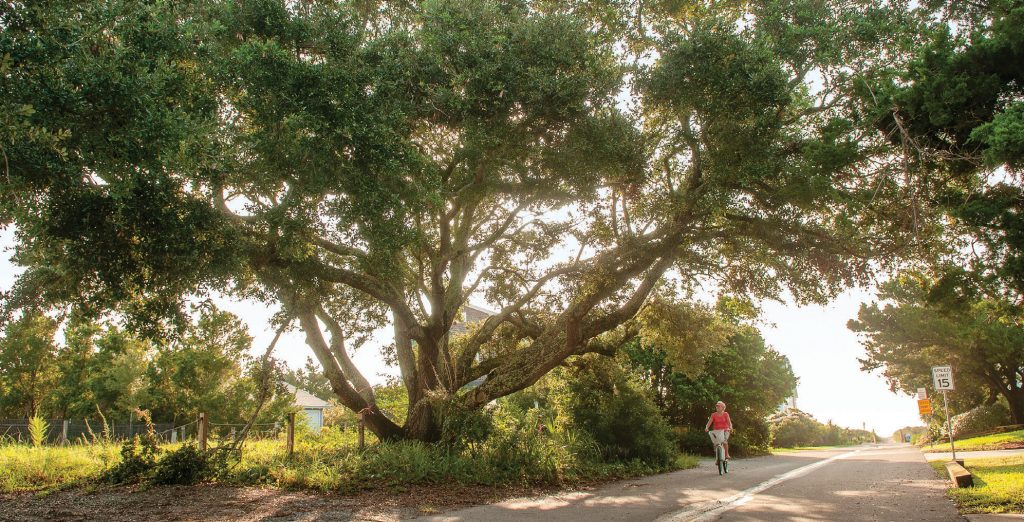A Living Heritage
With a little knowledge and care, the Southern live oak can be a beautiful and beneficial feature of local landscapes
BY Melissa Sutton-Seng

There’s something captivating about a grand, graceful, ancient tree, and few are as enchanting as a Southern live oak.
Live oaks only grow close to the coast in North Carolina, their nearly evergreen foliage nourished by the warm, humid air and mild winters. The storied Airlie Oak, at around 500 years old, is the Cape Fear’s best-known live oak, but others fill in the backdrop to everyday life. They populate the local landscape, lining streets, shading playgrounds and, yes, looming large in our concerns anytime a hurricane threatens.
Though they sometimes give way in the wind, live oaks are resilient and beneficial. Along with other shade trees, they cool outdoor spaces, improve air quality, provide a bit of natural sunscreen, and even lower air conditioning costs in shaded buildings. A well-maintained live oak is a precious resource.
Planting a live oak is easy and affordable. Nurseries sell saplings, and nonprofits sometimes host tree giveaways to encourage urban (and suburban) reforestation. Of course, you can also collect a few acorns and start from the very beginning.
Whether planting a sapling or caring for a generations-old tree, it’s a good idea to contact an arborist with any concerns, including how to remove hazardous branches for hurricane season. The International Society of Arboriculture website (treesaregood.org) has a list of local, certified arborists to advise and assist with maintaining the health of live oaks and other trees. The North Carolina Cooperative Extension at the New Hanover County Arboretum is also a great source.
“He who plants a tree, plants a hope. … Heaven and earth help him who plants a tree, and his work its own reward shall be.” — Lucy Larcom
Have an oak tree?
Tips for care
Those fortunate enough to have a live oak on their property can take measures to prevent damage and encourage healthy growth.
Prune properly. Oaks should be pruned in winter to reduce the risk of oak wilt, a disease than can sicken or even kill the tree.
Fertilize. Since most landscaping involves gathering up fallen leaves and other debris instead of leaving them to decompose and nourish the tree’s roots, live oaks may need fertilizer periodically.
Protect the roots. Most people are cautious about tree limbs when working near a tree, but it’s easy to forget about the roots. When planning any construction or extensive landscaping, be mindful of the live oak’s root system.
Planting an oak tree?
Tips for the best results
Plant in the fall. Planting as the weather cools gives the tree a chance to establish itself before putting out new leaves in the spring.
Mind the roots. Roots buried too deep will suffocate. The root flare (the spot where the trunk base begins to widen) should be 1-2 inches above ground. Avoid “volcano mulching” — piling up mulch around the base of the trunk so it covers the root flare and bark.
Water carefully. It is best to saturate the ground and let it dry fully between waterings. Once a live oak is established, it doesn’t need to be watered except in a drought.
